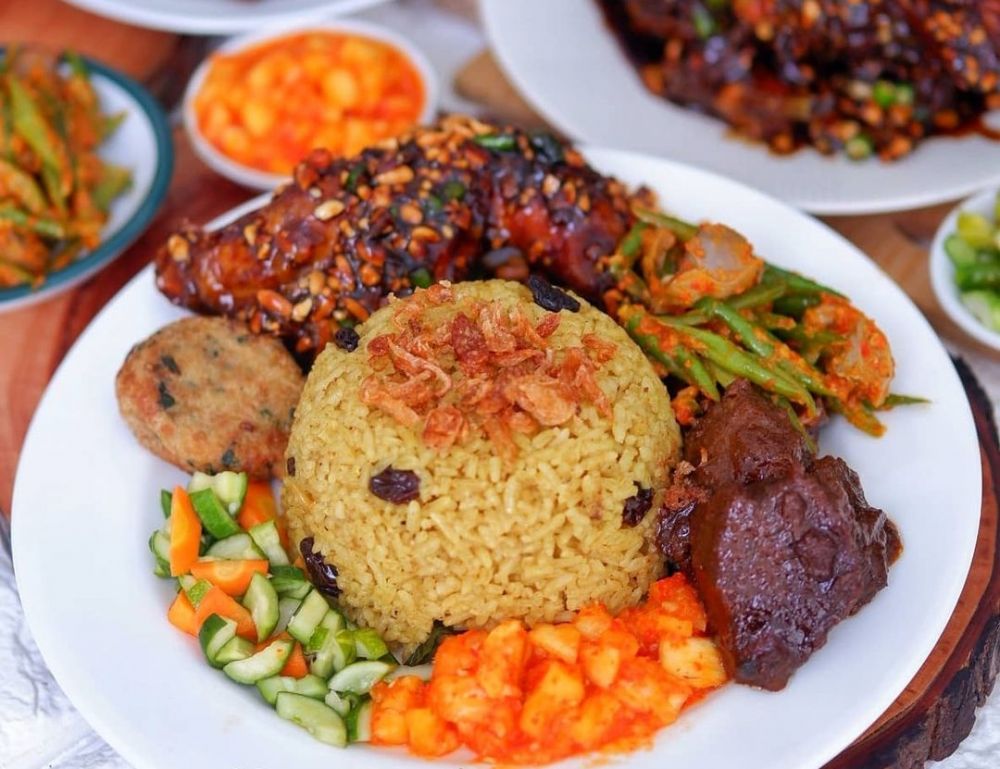Arab Indonesians are considered a non-indigenous ethnic group in Indonesia. During the colonial era of the Dutch East Indies, they were classified as "Vreemde Oosterlingen" or "Eastern Strangers." Arabs had arrived in Indonesia long before the 18th-century wave of Hadhrami Arab migration and were known to have purchased spices in Indonesia to bring back to the Middle East as early as the 8th century. Aside from engaging in trade, the Arab community played a significant role in spreading Islam among the indigenous population of Indonesia.
With a rich history, Arab-Indonesians have had a notable influence on various aspects of Indonesian culture, including gastronomy. They introduced Middle Eastern dishes to Indonesia, and some have assimilated and adapted these dishes into unique Arab Indonesian cuisines. Several distinctive Arab Indonesian dishes include:
1. Martabak

Martabak (مطبق), commonly known as martabak telur (مطبق تلور) in Jakarta, is a familiar Arab dish sold in street stalls across Indonesia. It consists of a thin dough made from a mixture of flour, water, and eggs. The dough is then filled with a mixture of eggs, minced meat, onions, scallions, and various spices. Once filled, the martabak is fried until cooked and often served with peanut or chili sauce.
2. Nasi kebuli

Nasi kebuli (أرز كبولي) is an Indonesian variation of pilaf with influences from Arab, Indian, and Afghan cuisines. Known for its rich blend of spices, Nasi kebuli features rice cooked in goat meat broth and goat milk, seasoned with ghee. This dish is typically served during Islamic religious celebrations, especially in Jakarta and regions with a significant Arab-Indonesian population.
3. Nasi minyak

Nasi Minyak (ناسي ميڽق) is a Malay dish from Jambi and Palembang, South Sumatra, reflecting Middle Eastern and Indian influences. It consists of rice cooked in clarified butter and Indonesian, Indian, and Middle Eastern spices. Nasi Minyak is served with various accompaniments such as fish curry, malbi beef, pentol satay, fried chicken, cucumber pickles, raisins, and pineapple sambal.
4. Tongseng

Tongseng (توڠسيڠ) is an Indonesian stew made with goat, mutton, or beef in a curry-like soup with vegetables and sweet soy sauce. The aromatic soup is crafted from a blend of garlic, shallots, black pepper, ginger, coriander, galangal, Indonesian bay leaves, and lemongrass sautéed in palm oil. Diced meat is added to the sautéed mixture and cooked until tender. Tongseng is considered a fusion of goat satay and spicy gulai soup, appearing in Java during the 18th to 19th centuries, influenced by Arab and Indian Muslim culinary traditions during the colonial era.
5. Nasi mandi
/https://kurio-img.kurioapps.com/22/01/21/eb042aab-b4e5-4c5d-87a1-66e71739e51a.jpe)
Nasi mandi (أرز المندي) is a traditional dish originating from the southern Arabian Peninsula and brought to Indonesia by Hadhrami people. It consists of rice and meat seasoned with a special blend of spices. Traditionally, Nasi Mandi is cooked in an underground pit. This dish is popular in many regions of the Arabian Peninsula, as well as in Egypt, the Levant, Turkey, and among the Arab-Indonesian community.
6. Kue asida

Kue asida (عصيدة) is an Indonesian pudding dessert made from water, wheat flour, sugar, cinnamon, butter, and honey. Originating from the Maluku Islands, it reflects influences from Malay and Arab Indonesian cultures. Kue asida is commonly served during Ramadan as part of iftar.



















